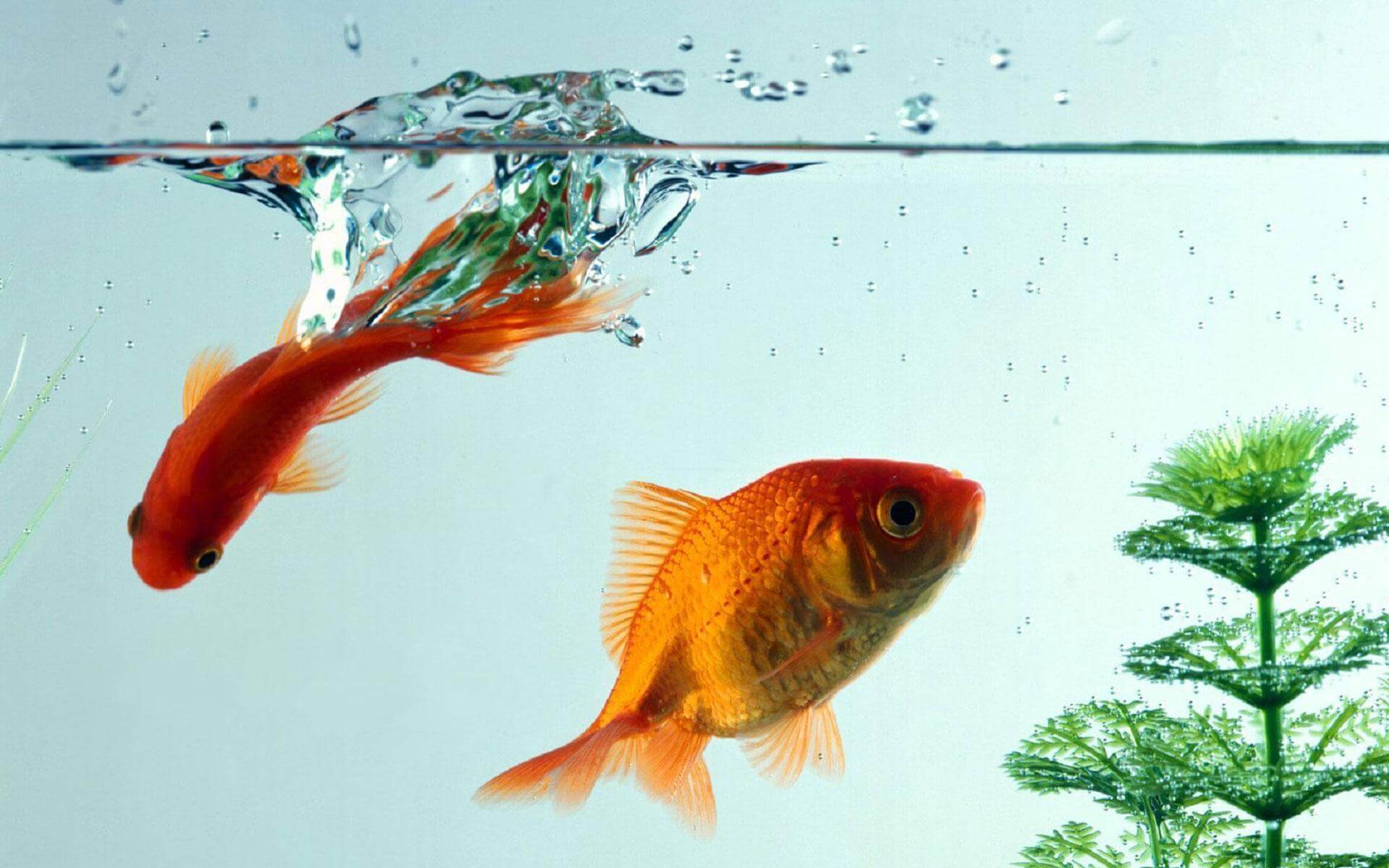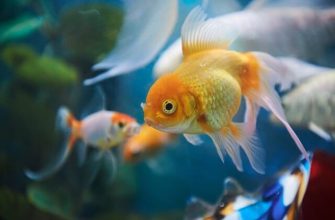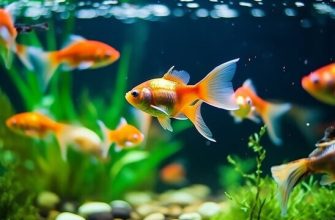Goldfish are one of the most popular freshwater aquarium fish kept as pets around the world. Their bright colors, unique shapes, and playful personalities make them endearing companions. In fact, goldfish ownership has been steadily rising in recent years as more people discover the joys of keeping these personable fish.
While goldfish are relatively easy to care for, there are some important factors to consider when it comes to their habitat setup. One key element is maintaining the proper water temperature. Goldfish are coldwater fish that thrive in cooler water compared to tropical species. Understanding their ideal temperature range and whether or not they need a heater is crucial for their health and longevity.
This article will provide an in-depth look at goldfish temperature requirements, signs of temperature stress, heater options, setup tips, and safety precautions. The goal is to equip goldfish owners with the knowledge to successfully regulate water temperature for their fishy friends. With the right environment, goldfish can live for up to 10-15 years and provide years of enjoyment.
Ideal Water Temperature for Goldfish

The ideal water temperature range for goldfish is between 72-78°F (22-25°C). This temperature range allows goldfish to thrive and live a healthy life. Goldfish are cold water fish that originate from temperate climates, so they prefer cooler water temperatures. If the water temperature drops below 50°F or rises above 80°F, it can cause stress and health issues for goldfish.
The optimal range keeps their metabolism and immune system functioning properly. Fluctuations in temperature outside of their ideal range can make them more susceptible to ich and other diseases. Within the 72-78°F zone, goldfish are energetic, have a strong appetite, and exhibit natural behaviors.
Can Goldfish Survive Without a Heater?
Goldfish are hardy fish that can survive a wide range of water temperatures. In fact, goldfish do not require a heater in many home aquarium settings.
Goldfish are capable of surviving in cold water temperatures down to 50°F. Their ideal temperature range is from 65-75°F. As long as the ambient temperature of the room where the aquarium is kept falls within this range, goldfish will thrive without a heater.
During winter months or in cold climates, goldfish may become slightly less active but their health is unlikely to suffer in unheated aquariums. The key is keeping the water temperature stable rather than fluctuating hot and cold. As long as sudden temperature shocks are avoided, goldfish can live long healthy lives without artificial heating.
Factors That Impact Goldfish Water Temperature
The two main factors that impact goldfish water temperature are the climate if kept outdoors in a pond, and the ambient room temperature if kept indoors in an aquarium tank.
For outdoor ponds, the geographic location and seasonal weather patterns will determine the temperature range. Goldfish kept in ponds in temperate climates experience a wider temperature fluctuation compared to tropical climates. In areas with cold winters, pond temperatures can drop below 50°F/10°C. In contrast, pond temperatures remain warmer year-round in regions with mild winters.
Indoor aquarium tanks are impacted by the ambient room temperature. Fluctuations in home heating and cooling can cause tank water temperatures to vary several degrees daily and seasonally. Tank location also matters – tanks placed near windows, vents, or drafts experience greater temperature swings. Maintaining stable indoor tank temperatures requires monitoring and adjustment.
Using a Heater for Goldfish
While goldfish can survive without a heater, there are some benefits to using one in their tank. The main advantage is that a heater helps maintain a stable water temperature. Fluctuations in temperature can stress goldfish and make them more susceptible to disease. A heater prevents large swings in temperature that may occur due to weather changes or other factors.
Additionally, heaters allow you to keep the water temperature at the ideal range for goldfish health and activity. This is usually between 65-75°F. While goldfish can survive cooler temps, they tend to be more active and display natural behaviors when the water is within their preferred temperature range. The heater gives you control to maintain the tank at optimal conditions.
Finally, a heater may be necessary to prevent the water from getting too cold in the winter. Extreme cold can cause goldfish to become inactive and stop eating. A heater helps safeguard against temperatures dipping too low when ambient temperatures drop. Overall, a heater provides consistency and ideal conditions even though it may not be absolutely essential for goldfish survival.
Heater Options for Goldfish

When selecting a heater for a goldfish tank, there are a few types that tend to work best:
-
Submersible heaters – These are designed to be fully submerged in the tank. They often come with suction cups to attach them to the inside wall. Submersible heaters like the Aqueon Submersible Aquarium Heater are reliable and effective options for goldfish tanks.
-
In-line heaters – These connect to the external canister filter to heat the water as it passes through. In-line heaters allow for hidden equipment and even heating. The Hygger Titanium Aquarium Heater is a popular in-line choice.
-
In-filter heaters – Designed to be placed directly inside the filter, these provide similar benefits to in-line heaters. They are less common but can be a good choice for canister filters.
The key is choosing a heater appropriately sized for the tank volume. Under-powered heaters can struggle to maintain the ideal temperature range. It’s also important to get a quality heater with good temperature regulation to prevent overheating.
Setting Up and Using a Heater
When setting up and using a heater for your goldfish tank, follow these key steps:
-
Select an appropriate wattage heater for your tank size. A good rule of thumb is 5 watts per gallon of water. Refer to the heater packaging for specific guidance.
-
Install the heater horizontally near the filter outlet to promote even heat distribution. Ensure the heater is fully submerged but avoid contact with gravel or decor.
-
Set the temperature based on your goldfish variety – around 74°F for fancy goldfish and around 64°F for common goldfish. Adjust accordingly based on tank conditions.
-
Plug the heater into a thermostat or temperature controller for automatic adjustment. This helps maintain a stable temperature.
-
Monitor the temperature daily with a separate thermometer to ensure accuracy. Calibrate the heater as needed.
-
Inspect the heater regularly for signs of damage or malfunction. Replace immediately if any issues are detected.
-
Unplug the heater when performing water changes or maintenance to avoid overheating and burns.
Proper heater setup and monitoring ensures your goldfish remain happy and healthy in their ideal temperature range. Adjust settings gradually and observe fish closely for signs of stress.
Heater Safety Tips
When using a heater for your goldfish tank, it’s important to take safety precautions to prevent any accidents or injuries.
Here are some tips:
-
Always fully submerge the heater in water before turning it on, as running a heater without water can cause it to crack or explode.
-
Position the heater horizontally near the filter output to help distribute heat evenly.
-
Use a temperature controller to regulate the heater and prevent overheating that could harm or even cook your fish.
-
Check that the heater is designed and rated for the size of your tank. An undersized heater can overwork to heat the water.
-
Routinely check that the heater is working properly and disconnect it if any issues arise. Malfunctioning heaters can overheat.
-
Ensure the heater has intact protection around the heating element. Exposed elements can deliver electric shocks and burns.
-
Consider using a heater guard or shield for additional protection.
-
Unplug the heater when doing maintenance to avoid electric shocks. Let it fully cool before handling.
-
Do not touch hot equipment with wet hands. Seek medical help immediately for any electric shocks or burns.
Taking basic precautions can help make sure your fish heater operates safely. Monitor it routinely and address any issues promptly.
Signs of Temperature Related Stress

Temperature issues are one of the most common causes of stress in goldfish. There are a few key behavioral and physical signs to watch out for that may indicate the water temperature is not ideal for your goldfish.
Some behavioral signs of temperature stress include:
-
Lethargy or loss of appetite – Goldfish become inactive and stop eating as much when the temperature is too cold or too warm.
-
Gasping at the surface – If goldfish are gasping for air at the top of the tank, this likely signals the water lacks sufficient oxygen due to improper temperatures.
-
Hiding – Goldfish will hide towards the bottom or corners of the tank if experiencing thermal stress.
-
Rapid gill movement – Fast gill flaring can indicate the temperature change is causing breathing issues.
Physical signs of temperature stress include:
-
Discoloration – Pale, blotchy, or faded colors can signal temperature shock.
-
Clamped fins – Goldfish clamp their fins tightly to their bodies when stressed by temperature.
-
Shredding of fins – High temperatures sometimes cause fin deterioration.
-
Cloudy eyes – Thermal stress leads to eye cloudiness from fluid buildup.
If you notice any of these behavioral or physical changes, take steps to gradually adjust the tank temperature to fall within the ideal range for goldfish of 65-72°F 3. With prompt adjustment, goldfish can bounce back quickly from temperature fluctuations.
Conclusion
Goldfish are coldwater fish that do best in water temperatures between 65-75°F. While they can survive without a heater, especially in warmer climates, using a heater provides more stable temperatures and reduces temperature fluctuations that can stress goldfish.
Factors like tank location, room temperature, and season can impact aquarium temperature. Small tanks are also prone to greater temperature swings. Using an appropriate heater and monitoring water parameters helps maintain optimal conditions.
When setting up a heater, select a quality model correctly sized for the tank. Place the heater near filter outflow for circulation. Carefully follow directions to calibrate temperature and use a thermometer to monitor. Unplug heaters when doing maintenance. Test heaters in a bucket before using in a tank. With proper setup and monitoring, aquarium heaters can help provide healthy water temperatures for goldfish.








